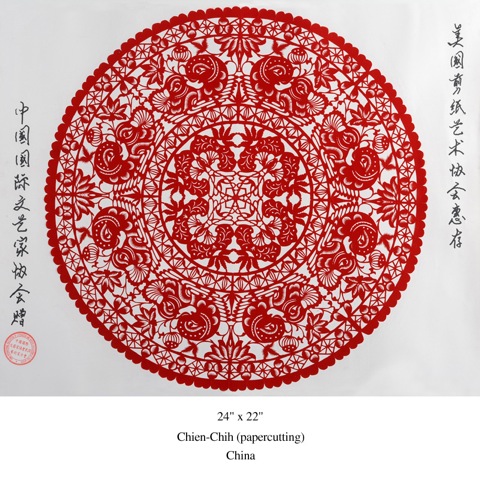The Earliest Papercutters
Papercutting or paper cutting is one art of creating patterns and designs. The art has evolved uniquely all over the world to adapt to different cultural styles. One traditional distinction most styles share in common is that the designs are cut from a single sheet of paper as opposed to multiple adjoining sheets as in collage, although one style of papercutting, découpage, or “cutting-out,” builds up an image or pattern in a way somewhat similar to collage. Modern papercutters work in a vast array of methods and with various traditional and non-traditional materials. Contemporary papercutting is also sometimes associated with the art of stenciling, itself being derived from techniques used in graffiti art. The use of hand-cut stencils in graffiti art has received international attention in recent years, due in part to artists such as Swoon and Banksy.

Paper cut art appeared during the Han dynasty in 4th century AD after the Chinese official, Cai Lun, invented paper in 105 AD. Before paper, clay, wood, slate and parchment (prepared animal skins) had all been used for writing and drawing. The Greeks and Romans wrote on waxed tablets with a pointed stylus for temporary writing. The term paper itself comes from the word papyrus, which is the plant that the Ancient Egyptians processed to write on. However, papyrus isn’t actually paper: the Egyptians created it by slicing the stem of the papyrus plant into thin strips and pasting them together into scrolls and sheets. The paper that Cai Lun invented, on the other hand, was less expensive than vellum or parchment and even than papyrus, and to some degree less time consuming than any of the others to create: The wood and stems of plants and trees such as the mulberry (kozo) were not cut and layered as in papyrus but instead pulped, so that the small pieces of plant formed a sheet randomly. This paper, which was quite sturdy and could be very beautiful, was a big advance. The oldest surviving paper cut out is a symmetrical circle from the 6th century Six Dynasties period found in Xinjiang China. Papercutting continued to be practiced during the Song and Tang Dynasties as a popular form of decorative art.
By the eighth or ninth century papercutting appeared in West Asia (Anatolia, modern Turkey). The knowledge of papermaking did not reach Europe until the 13th century. In Switzerland and Germany it is not until the 16th century that we have firm evidence of papercut art or scherenschnitte (“scissor cuts”).

